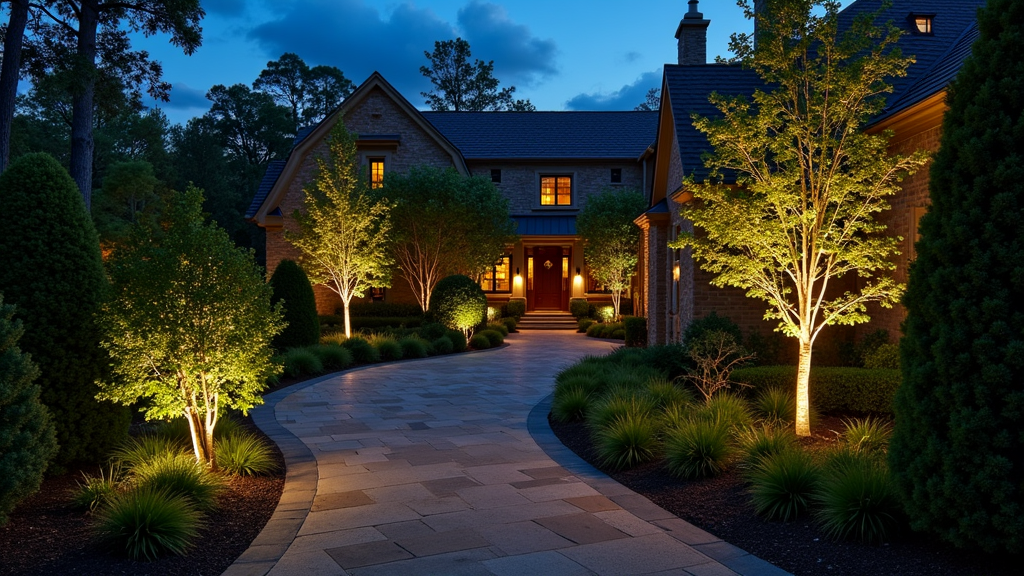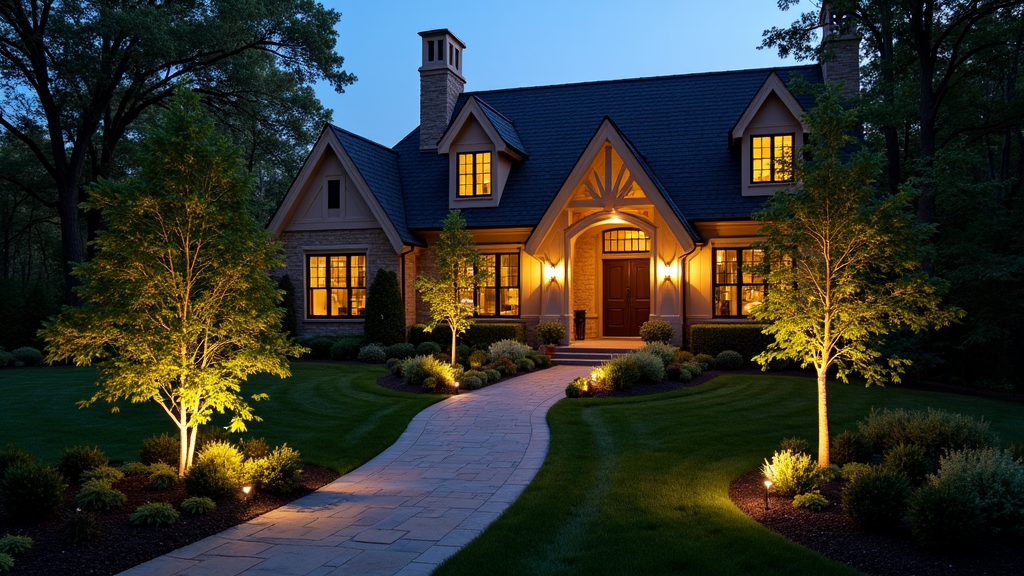Introduction
When it comes to landscape design, every decision you make can significantly influence the overall aesthetic and ecological https://postheaven.net/seanyarkoo/inspiration-from-nature-biomimicry-in-nc-landscape-designs balance of your environment. One of the most vital components in this equation is local flora—the plant life native to a specific area. Understanding "The Impact of Local Flora on Your Landscape Design Choices" can transform not only how your garden looks but also how it interacts with its ecosystem.
Imagine transforming your backyard into a vibrant oasis that reflects the natural beauty of North Carolina’s diverse habitats. This article will guide you through the myriad ways local plants can shape your landscaping decisions, emphasizing their benefits and implications for sustainability, aesthetics, and maintenance.
Understanding Landscape Design
The Basics of Landscape Design
Landscape design isn’t just about planting flowers and shrubs; it’s an intricate blend of art and science aimed at enhancing outdoor spaces. It encompasses elements such as:
- Hardscaping: Paths, patios, walls. Softscaping: Plants, trees, soil. Water Features: Ponds, fountains.
Why is Landscape Design Important?
Good design creates functional outdoor spaces that cater to human needs while respecting nature. It offers numerous benefits:
- Enhances property value. Improves environmental quality. Provides recreational spaces.
The Role of Local Flora in Landscape Design
What is Local Flora?
Local flora refers to the native plant species that grow naturally in a particular region without human intervention. For instance, when we discuss landscape design in North Carolina, we're looking at a variety of species adapted to its unique climate and soil conditions.
Benefits of Using Local Flora
Using native plants has multiple advantages:
Low Maintenance: Native plants require less water and fertilizer. Biodiversity Support: They support local wildlife by providing food and habitat. Soil Health Improvement: Many native plants contribute positively to soil health.The Impact of Local Flora on Your Landscape Design Choices
Incorporating local flora into your landscape design choices is not just beneficial—it's essential for creating a sustainable and harmonious environment. Native plants are adapted to thrive in specific climatic conditions and soil types; thus they require minimal intervention once established.
Moreover, using these plants fosters biodiversity by attracting local pollinators like bees and butterflies. This creates a thriving ecosystem right in your backyard! You may wonder how to begin integrating local flora into your designs? Here are some practical tips:
Selecting the Right Plants
Different regions boast various native species; therefore, researching which plants are indigenous to your area will help you make informed choices.
- Trees: Consider oak or pine varieties common in North Carolina. Shrubs: Look for dogwoods or azaleas that bloom beautifully. Flowers: Wildflowers like purple coneflower add splashes of color.
Designing with Purpose
Your landscape layout should reflect both aesthetics and function. Think about:
- Planting clusters for visual impact. Creating layers with tall trees behind shorter shrubs. Including pathways that encourage exploration.
Challenges of Using Local Flora
Common Misconceptions
Some people believe using native plants leads to bland landscapes; however, this couldn’t be further from the truth! With careful selection and arrangement, local flora can create stunning visual compositions filled with texture and color throughout all seasons.
Maintenance Concerns
While native plants do require less maintenance than exotics, they still need attention during establishment phases. Regular watering until established is crucial as well as occasional pruning for aesthetic purposes.
Sustainable Practices in Landscape Design
Eco-Friendly Approaches
Choosing local flora contributes directly to sustainable landscaping practices. Implement methods such as:
- Rain gardens for stormwater management. Xeriscaping by selecting drought-tolerant natives.
Reducing Chemical Use
Native plants usually resist pests better than non-natives; thus, they reduce the need for chemical pesticides or fertilizers—making your garden safer for children and pets!
Designing with Seasons in Mind
Seasonal Color Changes
One fantastic aspect of using native flora is its ability to showcase seasonal changes beautifully. For example:
Spring brings blooming wildflowers like trillium. Summer showcases lush green foliage from ferns. Autumn offers breathtaking hues as leaves change color.Year-Round Interest
To maintain visual interest year-round, consider incorporating evergreen species alongside deciduous ones—ensuring beauty regardless of season!

Integrating Hardscape Elements
Creating Structure
Your landscape should include hardscape elements—these provide structure and functionality while complementing softscape features elegantly.
Examples include:
- Stone walkways winding through flower beds. Wooden decks overlooking serene gardens.
Harmonizing Materials
Choosing materials that resonate with nature helps solidify cohesion within the landscape design—think about using locally sourced stones or reclaimed wood!
Encouraging Wildlife Habitat
Attracting Pollinators
Planting local flora creates habitats for various wildlife species such as birds and pollinators like bees or butterflies—integral parts of our ecosystems!
Consider installing:

Bee hotels made from hollow stems. Birdhouses crafted from natural woods.
Building Biodiversity
A diverse array of plant life encourages a balanced ecosystem where different organisms coexist harmoniously—a vital aspect often overlooked during typical landscape designs!
Measuring Your Success
Assessing Growth & Health
Regular monitoring allows you to gauge whether your selections thrive under current conditions—you’ll want to check soil moisture levels regularly!
Checklist for Evaluation:
| Aspect | Frequency | |---------------------|-------------------| | Soil Testing | Annually | | Plant Health Checks | Monthly | | Watering Schedule | Weekly |
FAQs About Using Local Flora in Landscape Design
FAQ 1: What are some examples of native plants suitable for North Carolina?
Native options include Eastern Redbud (Cercis canadensis), Black-eyed Susan (Rudbeckia hirta), and American Holly (Ilex opaca).
FAQ 2: Are there any drawbacks to using local flora?
While lower maintenance is a perk, some native plants may take longer to establish compared to more aggressive non-native species initially.
FAQ 3: How do I find professional help for my landscape design?
Look for professionals specializing in sustainable practices or those specifically experienced in "landscape design North Carolina" projects focusing on natives!
FAQ 4: Can I mix non-native plants with natives?
Yes! Just ensure non-natives are not invasive or harmful towards existing ecosystems—they should complement rather than compete against locals!
FAQ 5: What type of maintenance do native gardens require?
Once established (usually after one growing season), maintenance typically includes watering during dry spells along with occasional weeding or pruning if desired aesthetically.
FAQ 6: How can I educate myself further on this topic?
Consider attending workshops offered by local botanical gardens focusing on sustainable gardening practices involving natives—the internet also hosts excellent resources dedicated specifically toward these subjects!
Conclusion
In conclusion, understanding "The Impact of Local Flora on Your Landscape Design Choices" opens up endless possibilities—not just for aesthetics but also ecological harmony within our environments! By embracing local species tailored specifically towards your region's climate conditions while maintaining diverse ecosystems filled with vibrant life forms—you'll cultivate landscapes that resonate deeply both visually pleasingly functionally sound too!
Utilizing these principles ensures longevity beyond mere beauty; it establishes connections between ourselves nature itself—each decision we make impacts broader systems around us profoundly! So why wait? Start weaving local flora into YOUR next landscaping project today—you won’t regret it!